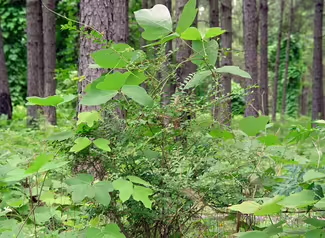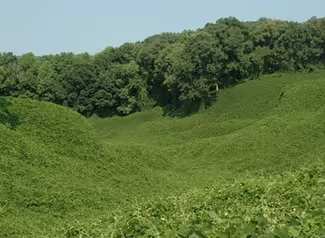
Kudzu
Growing up to one foot a day, kudzu (Pueraria montana) is a fast-growing vine that can smother native vegetation and create dense monocultures. It is also a host for soybean rust, which can result in significant soybean yield losses.

Kudzu is native to China and Japan and was introduced as part of a Japanese garden exhibit during the 1876 Centennial Exposition in Philadelphia. During the dust bowl era of the 1930s, it was marketed for combating soil erosion. Now, kudzu can be found in many southeastern U.S. states covering more than 7 million acres.
Regulation of Kudzu
Kudzu is listed as an invasive plant in Illinois through the Illinois Exotic Weed Act and as a noxious weed through the Illinois Noxious Weed Law.
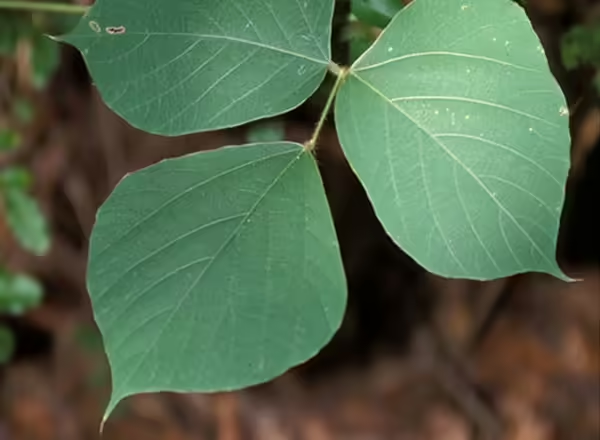
Kudzu leaves are trifoliate, or three-parted, and are alternately arranged on the stem. Leaflets are broadly ovate and have tiny hairs on the underside and margins. Leaflets may have a smooth or lobed margin. Stems are hairy and yellow green when young, hardening off to a grey woody stem growing up to 10 inches in diameter. Flowers are in racemes, red to purple in color and are quite fragrant. The fruit is a legume covered in long hairs.
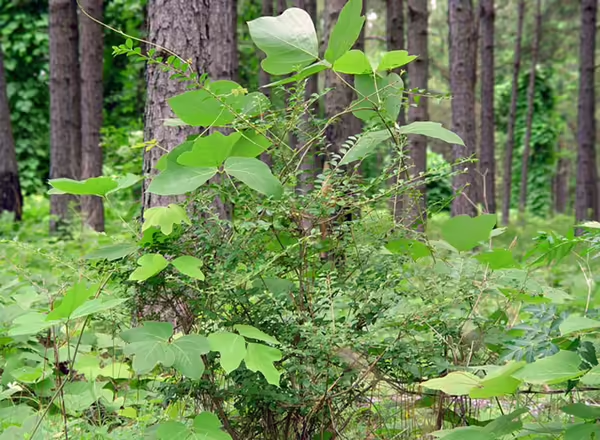
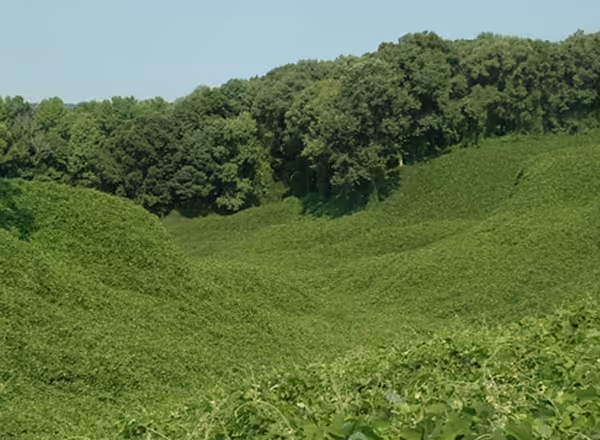
- Mechanical control: Very heavy grazing pressure may eradicate smaller infestations if repeated for three to four years. Cutting plants close to the ground during hot, dry summer months for several years may exhaust root reserves. Mechanical treatments lose effectiveness on old, well-established infestations.
- Fire: Prescribed fire may be used as an initial treatment to clear old growth to allow contact with herbicides on new growth, and fire may expose hazards that are masked by the infestation.
- Chemical control: Always read and follow herbicide labels before initiating treatment.
- Foliar: Apply 0.5% clopyralid in August or September when plants are flowering. Clopyralid is selective primarily to plants in the bean (Fabaceae) or aster (Asteraceae) families and is a good choice when kudzu is climbing into desirable tree species from other plant families. Aminopyralid at 0.5% v/v in water is also effective though less selective. Triclopyr or glyphosate are somewhat effective at 4% v/v in water with repeated treatments.
For more information, explore Management of Invasive Plants and Pests of Illinois
Resources
Resources
